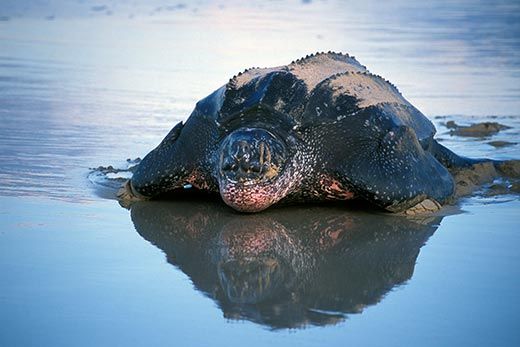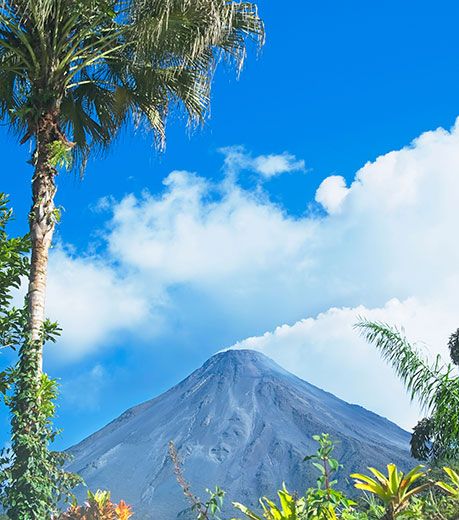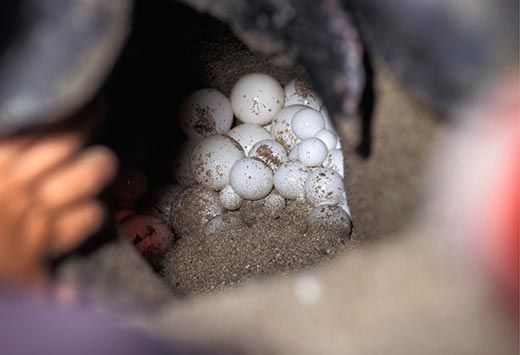Costa Rica: Turtles and Birds
Close government watch on wildlife has made the Central American country a must-see for animal lovers
/https://tf-cmsv2-smithsonianmag-media.s3.amazonaws.com/filer/Life-List-Costa-Rica-Arenal-Volcano-631.jpg)
With jungle zip-lining, white-water rafting and fire spewing from the Arenal volcano, Costa Rica offers plenty of thrilling adventures and sights. What’s equally exciting is its wildlife. It’s not unusual to spot howler monkeys in trees or giant green iguanas on a bike path; packs of ring-tailed coatimundi roam freely even on busy roads. But if you want to see birds and turtles, patience pays off.
Of the world’s seven species of sea turtles, five nest on protected beaches in Costa Rica. Through an amazing process of imprinting, adult female turtles may migrate thousands of miles to their natal beach to lay their eggs. The female leatherback turtle, which I observed in Costa Rica and which can measure six feet at maturity, rides the tide in and lumbers ashore on a moonlit beach, where visitors often wait for hours to see her. She digs a three-foot deep hole with her back flippers and deposits about 60 soft eggs, then carefully covers them and returns to the sea.
For minimum impact on the endangered turtles, authorities supervise and limit the number of visitors each night. No talking above a whisper and no lights except for the ranger’s red light as the mother goes about her labor. Two months later the hatchlings, just three or four inches long, break through the sand and scuttle to the sea.
“It’s spectacular, as if you’re witnessing the birth of nature,” says Drexel University ecologist James Spotila, who has studied Costa Rica’s leatherbacks for 20 years. “You can put up a zip-line almost anyplace, but you can’t go to many places in the world and see a leatherback lay her eggs.” Prime turtle-watching spots are Las Baulas National Park on the Pacific coast and Tortuguero National Park on the Caribbean coast.
Tortuguero is also one of the hotspots for bird-watching. Tiny Costa Rica has almost 900 species of birds, nearly equivalent to the number in all of North America. Fortunately, Costa Rica has set aside many areas to protect its avian bounty, and birders, like turtle enthusiasts, talk and tread softly to spot them. With jewel-colored quetzals, toucans and macaws, dozens of hummingbird species as well as herons, magnificent frigate birds and pygmy owls, just to name a few, visitors can expect to boost their birding life lists. “There is such a great variety of tropical birds, plus the migrants, ” says Fred Grady, a Smithsonian Institution biologist who has traveled to Costa Rica five times. He saw 300 species on his last trip and even went nighttime birding. His advice: “Hire guides, they know where everything is. You’ll see far more birds.”
Planning Your Next Trip?
Explore great travel deals
Smithsonian magazine participates in affiliate link advertising programs. If you purchase an item through these links, we receive a commission.



